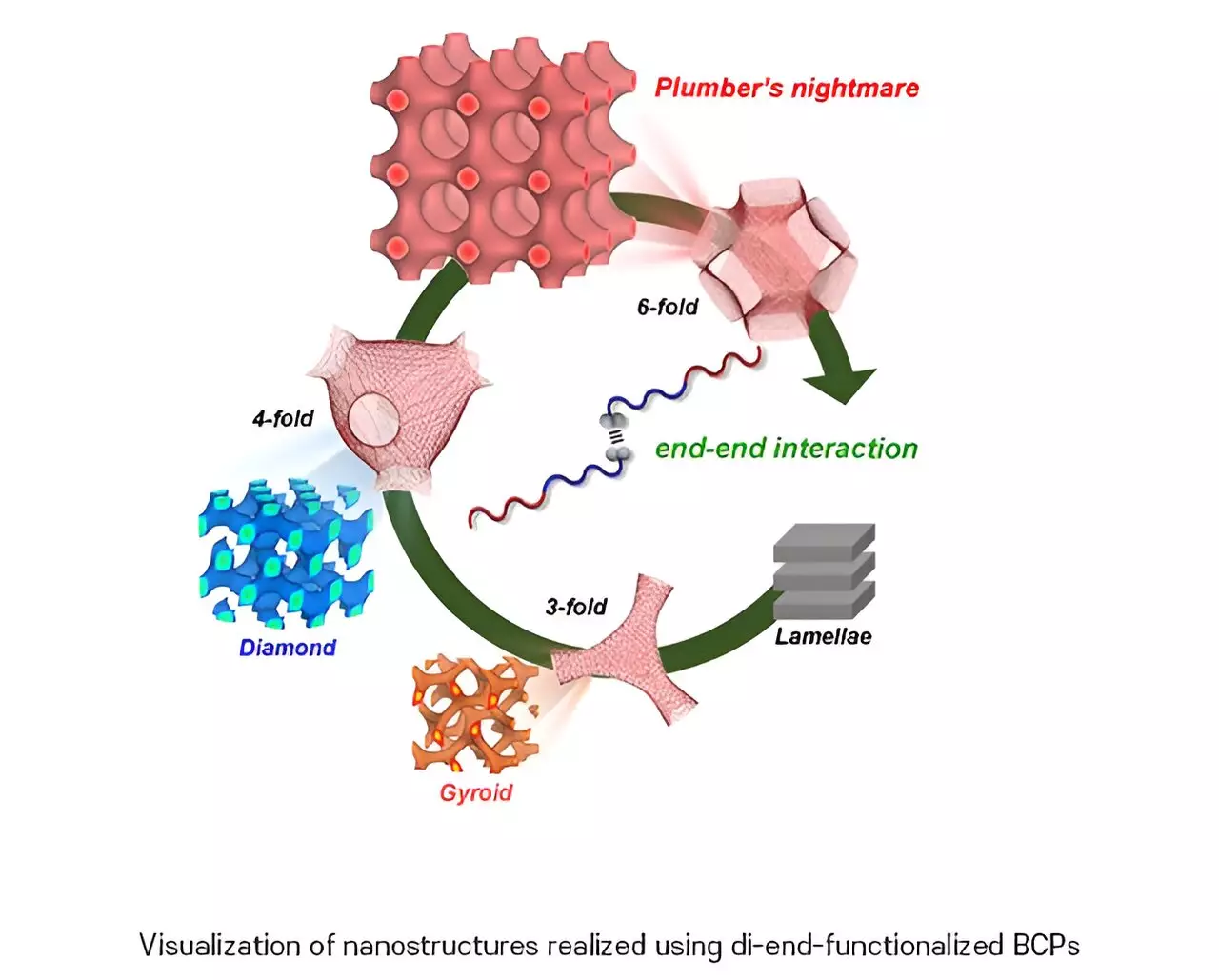Polymers have long been an area of fascination for researchers, with their diverse applications spanning across various fields. Among the different types of polymers, block copolymers (BCPs) have emerged as a promising avenue for creating nanoscale structures. However, the quest to achieve intricate and complex BCP structures has been deemed as an impossible feat, until recently. In a groundbreaking research conducted by a team at Pohang University of Science and Technology (POSTECH), the elusive “plumber’s nightmare” structure was not only realized but also paved the way for a range of previously enigmatic BCP structures.
Traditionally, research on BCP structures has primarily focused on the main polymer chains. However, the POSTECH researchers took a different approach by shifting their attention to the often-neglected chain ends, which constitute less than one percent of the polymer. By crafting di-end-functionalized BCPs, where different molecules are linked to each end of the polymer chain, the researchers were able to trigger a robust mutual attraction among the polymer chain ends. This attraction led to the coalescence of all polymer tails inward, resulting in the realization of the elusive plumber’s nightmare structure.
The success of the POSTECH research extended beyond the realization of the plumber’s nightmare structure. The research team also achieved the production of a range of other BCP structures, including gyroid and diamond structures. These achievements mark a significant milestone in the field of polymer nanostructures, as they were previously confined to the realms of imagination and theory.
One of the key findings of this study is the conclusion that complex BCP structures can be stably realized when potent forces exist at the chain ends. This observation holds true regardless of the adjustments made in BCP polymer composition and the chemical properties of the main chain. This discovery paves the way for future studies that aim to develop diverse composite-structure polymer nanostructures. The universal applicability and adaptability of this research have the potential to revolutionize the field and open new doors for various applications.
The intricate nature of the plumber’s nightmare structure suggests that it possesses unique optical and mechanical traits. With its distinctive channel structure, this nanostructure stands apart from existing BCP structures. The realization of the plumber’s nightmare opens up new opportunities for studying and harnessing these unique properties for various applications. Researchers can now explore the potential of these structures in fields like optics, medicine, and even semiconductor technology.
The success of the POSTECH research signifies a paradigm shift in the field of material science. What was once deemed impossible has now become a reality, thanks to the innovative approach taken by Professor Moon Jeong Park and Ph.D. candidate Hojun Lee. Their groundbreaking research is a testament to the power of curiosity, perseverance, and thinking outside the box in pushing the boundaries of scientific knowledge.
As we delve deeper into the world of polymer nanostructures, the possibilities seem endless. The research conducted by the POSTECH team has not only opened new doors for the realization of complex BCP structures but has also ignited the curiosity of researchers across the globe. The study’s findings have laid a strong foundation for future studies focused on advancing the field and exploring new realms of polymer-based materials.
The realization of the plumber’s nightmare structure and the unveiling of various other intricate BCP structures by the research team at POSTECH mark a significant milestone in the field of polymer nanostructures. The ability to control and manipulate these structures has far-reaching implications, not only in the realm of material science but also in various industries. The journey to unlock the full potential of polymer nanostructures has just begun, and the future looks promising with endless possibilities to explore.


Leave a Reply